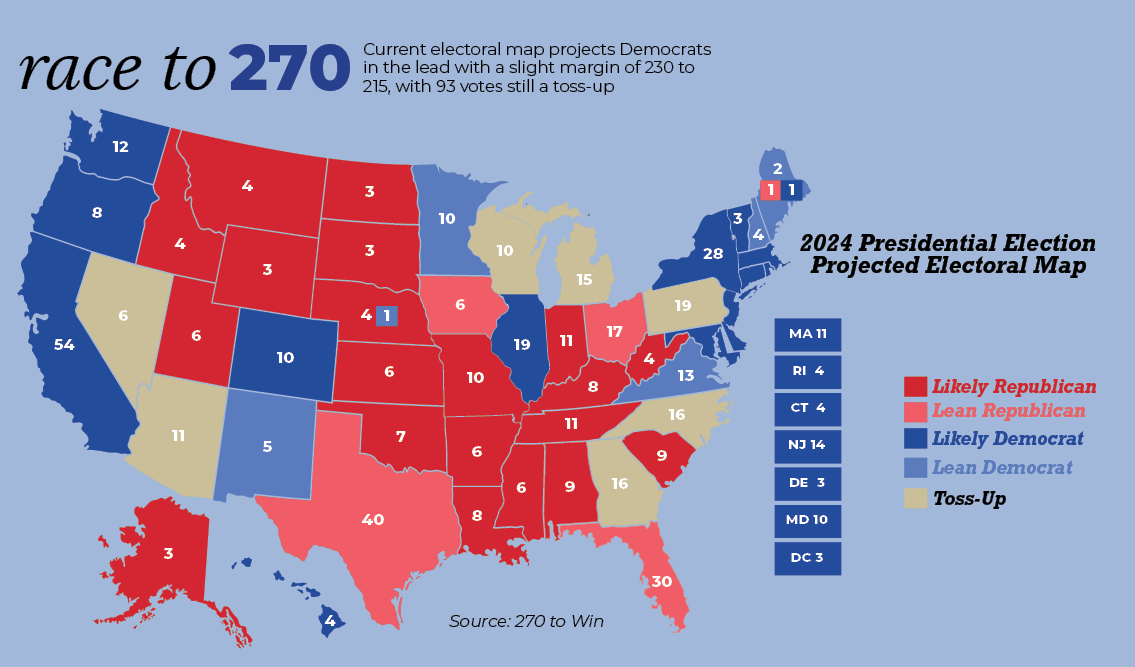Emma cannot draw her eyes away from her phone. With her AirPods in, effectively drowning out all “unnecessary” noise, she can only hear the faintest murmur of her teacher in the background. Her phone and life online serve as a much more pressing matter than the math she will never again use after high school. Before she knows it, the bell rings overhead. An hour and a half has passed in what felt like thirty minutes, and she has managed to spend an entire class period with her eyes glued to her phone.
As the first generation to truly be brought up in the digital era, today’s teens have been raised in a drastically different environment than all of the generations before them. Growing up in a society in which they were surrounded by and afforded easy access to cell phones, Generation Z has developed an addiction to them at an early age and is now facing the consequences.
Phone addiction, despite having no official diagnosis, is something that greatly affects teens today, including those at Marjory Stoneman Douglas High School. Sometimes referred to as nomophobia–the fear of being without a phone–phone addiction is one of the defining problems of Gen Z and one that most distinguishes teens today from those of preceding generations.
A study by Common Sense Media found that 50% of teenagers ages 13-18 feel as if they are addicted to their cell phones. This is more than consistent with the findings at MSD, where in a survey of 350 MSD students, 63.1% stated that they would personally consider themselves addicted to their phones.
While on their phones, teens have access to a seemingly infinite number of apps, but for MSD students most of their time is spent on social media. In fact, the survey found that 71% of MSD students spend more time on social media apps than educational, entertainment or gaming apps. The time that social media use consumes in teens’ lives is something specific to this generation of teens and one that has played a unique factor in their upbringing.
Phone Addiction Causes
It is not uncommon to hear older generations complain about teenager’s excessive phone usage, blaming it on laziness or indifference. However, while this may ring true for some, many more factors are at play that have led teens to depend on cell phones to the degree that they do.
One factor is the early age at which teens were exposed to cell phones. Unlike Gen X, who have watched phones become increasingly popular over the course of their lives, Gen Z was largely born into a world in which cell phones were prominent. Today’s teens were raised around phones and other similar devices, and many even had an iPad as a child.
It was Gen Z, after all, whose excessive iPad usage in childhood prompted the coining of the term the “iPad kid.” Referring to children whose only entertainment growing up was technology, Gen Z was the first generation to take on this term.
Then, once Gen Z had outgrown iPads, they went on to receive their own phones at young ages. In the MSD student survey, 76% of MSD students reported having gotten their first phone before the age of 12. This and teens’ early exposure to cell phones, have worked to instill the idea within Gen Z that cell phones are a necessity.
“I got my phone when I was around 8 years old, mainly because a bunch of my classmates had phones as well and I kept nagging my parents,” senior Adnan Sanaulla said. “It definitely established a habit of me using my phone throughout the day and has led me to rely on it more than I should.”
Aside from the normalization of cellphones, the marketing of apps to children and teens has also played a role in Gen Z’s addiction. Games, and other content geared towards kids, is what kept members of Gen Z occupied on their devices throughout their adolescence.
Children’s mobile games are a multi-billion dollar industry–having been worth $2.3 billion in 2017 according to Statista–and to support it, apps like Subway Surfers, Piano Tiles, Geometry Dash and YouTube Kids are advertised to children.
Then, as Gen Z grew older, it was no longer games that were being advertised to them, but social media platforms. Most of the features on these platforms and the services they provide are specifically designed to engage teenage or young adult audiences. The original purpose of Snapchat for instance, was to provide teens and college students with an app on which they could share photos and videos with one another, that would disappear moments later.
“Snapchat is appealing to me because it’s fun to be able to message primarily in pictures and have everything I and others send disappear eventually,” sophomore Emma Schwartz said. “Plus, I love being able to set goals about my streaks and keep in contact with my friends in a more enjoyable way than just texting.”
Practically everything people do and engage with online is monitored, which helps companies build an idea of what individuals want to see. Information regarding personal interests feeds the algorithms and advertising on social media platforms and dictates the content that will appear on users’ feeds later. This technique ensures that people will engage with content on social media platforms for longer periods of time, thus fueling teens’ phone addiction.
Still, there are other factors at play that are keeping teens addicted to their phones, namely the dopamine release their phone usage stimulates. According to Very Well Health, using cell phones and social media platforms results in the release of the neurochemical dopamine, which provides people with feelings of pleasure. This leads teenagers to use their phones as a source of instant gratification, as they associate their cell phones and the apps on them with feelings of happiness.
Besides the biological factors, teens also tend to spend a lot of time on their phones for the convenient modes of communication they provide. Teens are naturally sociable and are at a point in their lives in which forming connections and communicating with others is important, especially when it comes to their development.
Phones provide teens with a means by which they can maintain and enhance their connections with others. Whether they do this through texting, making phone calls, video calling or communicating via social media platforms, teens are often using their phones to actively communicate and keep in touch with their friends, family and others in a timely and convenient manner.
“Honestly, I do believe my phone has improved my ability to communicate with others,” freshman Brynn Levy said. “It brings me closer to people because I can just text them often, and sometimes talking to people in-person can be scary.”
Phone Addiction Effects
While teens’ cell phone addiction is partly a result of the device’s ability to help them communicate and maintain relationships, it also causes teens to isolate themselves and lose relationships. This is because the presence of smartphones in teens’ daily lives can draw their attention away from in-person interactions and serve to worsen their communication skills in real life.
Serving as a tool for distraction rather than connection, cell phones can lead teens to neglect their in-person relationships. For a lot of teens, the urge to check their cell phone during an in-person interaction is often present, but acting on that urge can be off-putting to others.
In a 2018 study by Pew Research, it was found that 72% of parents felt that while trying to have a conversation with their teen, they were at least sometimes distracted by their cell phone. A teenager being distracted by their phone during an interaction with their friend, family member or significant other can lead to feelings of neglect and disconnection.
“I am constantly harassing my daughters to ‘get your face out of your phone,’” English teacher Donna DeStefano said. “I remind them the phone is not making them better people, not helping them, and it is not a respectable way in which to spend time. I guilt them over their screen times and find myself greatly resenting any task or chore that went unfinished, but phone time wasn’t interrupted.”
Those close to teens are not the only people who have taken notice of this; even teens themselves have become aware of the wedge their phones are driving in their relationships.
“I think my phone has hindered my familial relationships since sometimes my family is all together, but we’re not really talking,” junior Tam-an Nguyen said. “We’re just existing in the same space and using our phones in that space.”
Teens’ relationships are not the only thing to be impaired by their cell phone usage; their ability to communicate effectively has been as well. For teens, communicating via text as opposed to phone calls is more commonplace, with abbreviations and emojis being used for convenience.
While favorable in the moment, using abbreviations and emojis when texting can actually damage teens’ writing skills. In a 2017 study conducted by scientists, it was discovered that the writing of students’ at the University of Peshawar suffered as a result of not using standard language while texting.
“I have had students respond with texting abbreviations,” DeStefano said. “Rarely is this done in my honors classes, but more so in core English classes. I think it is unfortunate that students don’t distinguish between writing for academic or personal/social purposes. I also feel when they respond in such a manner it is either due to their ignorance or their lack of respect for my assignment.”
Additionally, when having an in-person conversation, people use and read others’ visual clues, including gesticulations, body language and facial expressions. All of these things work to give conversations a deeper meaning and ultimately, cannot be replicated over the phone. When teens communicate via their phones, they are missing out on the unspoken, yet important information that is potentially being shared.
Cell phones’ ability to distract and disrupt teens’ lives applies not only to their relationships and capacity to communicate, but also to something significantly more detrimental–their involvement in car accidents.
According to data from the Center for Disease Control’s Youth Behavioral Surveillance System, 8% of teen drivers involved in fatal car accidents were distracted, with 23% of the distractions being a cell phone. At MSD, 33% of the student drivers who responded to the survey admitted to having used their phone while driving.
Much like the biological reasons for phone addiction, there are also biological effects, including the alteration of one’s brain chemistry.
In a study conducted by the Radiological Society of North America, a link was uncovered between phone addiction and the amount of gamma aminobutyric acid teens produced.
Smartphone addicted teens had increased levels of gamma aminobutyric acid, which is a neurotransmitter that slows down the brain’s motor functions by inhibiting brain signals. Too much of this neurotransmitter can disrupt the normal functioning of the brain and lead to mental health problems, including anxiety and depression.
Phone addiction is an addiction after all, and it presents with effects similar to those of other behavioral addictions including gambling. The phenomenon causes teens to have a dopamine deficiency, which instigates a cycle of compulsive behavior. Then, when teens do not have access to their phones, they suffer from withdrawal symptoms that can disrupt their daily lives.
“Any type of dependency can lead to students feeling anxious or irritable when they cannot use/have access to the item/substance they depend on,” psychology teacher Dawn Tavares said. “They will likely experience a dopamine release when they receive access to the substance or in this case, their phone. Therefore, as time goes on, they don’t necessarily produce enough dopamine on their own–without access to the phone–because their body begins to depend on the phone for the dopamine release.”
The effects phone addiction has on teens are often exemplified in the classroom. Simply having a cell phone within reach has been proven to reduce one’s cognitive capacity.
A study published in the Journal of the Association for Consumer Research dubbed this phenomenon the brain drain hypothesis, which dictates that people are less likely to rely on their own knowledge when they know they have easy access to an alternative source of information.
In terms of the classroom, this could mean that students are more likely to look up the answers to their assignments than use their own critical thinking skills to complete them because of the presence of their cell phones.
“It is extremely difficult to compete with any device as a teacher–students know they have such ease of access by turning to their phone, so they’ve learned to utilize it as a resource,” Tavares said. “Rather than taking the few extra seconds or minutes to think through the problem, they google it or ask Siri… Therefore, they become dependent on the ability to look up an answer rather than think through the problem and deduce information.”
Then, the shortened attention spans that teens have garnered as a result of their phone usage, limits their ability to pay attention in class. At MSD, 71% of students even admitted to believing that their attention span has become shorter as a result of their cell phone use.
“[My phone impacts my education] negatively,” senior Karen Liu said. “It distracts me from my school work and has decreased my attention span, so it’s more difficult to focus on the task at hand.”
Teens’ grades, test scores, classroom engagement and college attendance are all things that are being impacted by phone addiction–but this is not going unnoticed.
Restricting Phone Use in Schools
In response to teens’ phone addiction and the impact it has had on their education, state legislatures across the U.S. have imposed new laws that dictate how and when cell phones can be used in schools. Florida is one of these states, with Gov. Ron DeSantis having signed a bill that does so–House Bill 379–into law last year.
“Being normal kids, like kids were prior to social media is important,” DeSantis said when signing the bill. “The social media [causes] more problems than it solves, and I think it causes more harm than good. So, let’s have our education system be as much about traditional education as we can.”
This law took effect in July 2023 and imposed several new restrictions in Florida schools that brought about notable changes for students. One major thing that resulted from this law was the increased use of phone pockets by teachers.
As stipulated by HB 379, students are not to use cell phones or other wireless devices during instructional time unless “expressly directed by a teacher solely for educational purposes.” Building upon this stipulation, teachers have also been instructed to have a designated area in their classroom for students’ devices.
This, in addition to the disruption that cell phones have posed to teens’ educations, are the reasons many MSD teachers have chosen to hang up phone pockets in their classroom.
“I do have a phone pocket–I felt it was necessary, not only to comply with the law, but also to minimize the student’s temptation to reach in their pocket or hide their phone use during class,” Tavares said. “It was an easy decision to make on my part as I felt it truly was what was best for my student engagement.”
While not every teacher has been using phone pockets, a lot have and as such, students have had to adapt to this change. Unsurprisingly, this is not a change most MSD students are fond of.
In the student survey, 82% of MSD students stated that despite the fact that they understand why teachers are using phone pockets, they still ultimately dislike them and disagree with their use.
One reason the use of phone pockets is controversial is the threat of school shootings. Detractors of phone pockets argue that if all students’ are placing their phones away from them at the start of class, they would have no access to them in case of a shooting in order to call for help. This may prove upsetting to parents as well, as it is natural that they would want to be able to contact their children in case of an emergency.
“I disagree with the use of phone pockets,” freshman Ishan Hossain said. “I see where they [teachers] are coming from, but there could be an easier and less stressful way. Some people may need their phones on them in case of emergencies.”
However, teachers have taken this factor into consideration when choosing a location for their phone pockets.
“I chose to place my phone holder in the “safer zone” so students who felt they needed access in case of an emergency could feel confident they would have access,” Tavares said.
Phone pockets have not, however, completely kept students away from their devices during instructional time. It is not uncommon to witness students purposefully not placing their phones into their teacher’s phone pocket in order to use it during class. In fact, 52% of MSD students admitted to doing just that in the student survey.
In addition to cell phone access being restricted by the new law, so was access to TikTok. As of July, the social media platform was made inaccessible to students on school Wi-Fi and on devices owned by Florida school districts. Still, students can access the app at school when using cellular service or a Virtual Private Network.
This restriction is, once again, not one that MSD students are in favor of, with 73% believing that they should be able to access TikTok on school Wi-Fi. Nevertheless, it is one that teachers appreciate.
“I do not think students should have access to social media at school,” Tavares said. “I think it is another distraction. Additionally, I think cyberbullying is too common and we have an obligation and a duty to protect students on campus.”
Conclusion
Within Gen Z, it is commonly understood that phone addiction is a phenomenon they are disproportionately affected by. Nevertheless, cell phones are not going anywhere and neither is teens’ dependence on them. Cell phones are a necessity in today’s society and that is a reality that will not be changing anytime soon. What can change, however, is how teens and their families, educators and politicians respond to the problem of phone addiction, in order to prevent its effects from worsening and carrying on to subsequent generations.
This story was originally published in the March 2023 Eagle Eye print edition.












![National Honor Society Sponsor Lauren Saccomanno watches guest speaker Albert Price speak to NHS members. National Honor Society held their monthly meeting with Price on Monday, Nov. 4. "[Volunteering] varies on the years and the month, but we have started a couple new things; one of our officers Grace started a soccer program," Saccomanno said. "We have been able to continue older programs, too, like tutoring at Riverglades. NHS's goal is to have as many service projects as possible."](https://eagleeye.news/wp-content/uploads/2024/11/xNOeKNVwu7aErpVyJHrHogagZUUcLLosjtbIat94-1200x900.jpg)

![Ice Ice Baby. Skating to "Waltz" and "Romance" during her long program, figure skater Ava Zubik competes at the Cranberry Open in Massachusetts on Aug. 12, 2022. She scored a total of 86.90 on her short and free skate program, earning fifth place overall. "I try to make it [competing] as fun and enjoyable as I can because it's my senior year, and so I want to really enjoy competitive figure skating while it lasts," Zubik said.](https://eagleeye.news/wp-content/uploads/2024/11/skater1-799x1200.jpg)




















